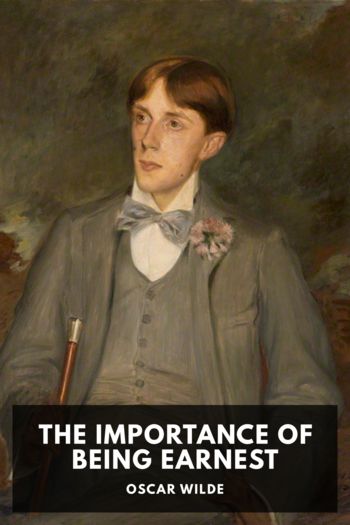Living History, Unknown [books to read in your 20s female TXT] 📗

- Author: Unknown
Book online «Living History, Unknown [books to read in your 20s female TXT] 📗». Author Unknown
After motioning the audience to sit down, Bill began the speech. To his immense credit, not even I realized that something was wrong. We learned later that an aide had placed the wrong speech in the TelePrompTer―the economic address Bill had given months before. Bill is legendary for extemporizing and ad-libbing, but this speech was too long and too important to do entirely off-the-cuff. For a nerveracking seven minutes, as his staffers rushed to correct the mistake, he delivered his remarks from memory.
It was a great speech, with just the right mix of passion, wisdom and substance. I was so proud of him that night. It was a courageous path for a new President. Franklin D.
Roosevelt had boldly found a way to give older Americans economic security through the Social Security program; Bill wanted, through health care reform, to vastly improve the quality of life for tens of millions of Americans. He held up a red, white and blue “health security card” that he hoped would be issued to every American, vowing to deliver a plan that would guarantee every citizen health insurance coverage and access to affordable, quality medical care.
“Tonight we come together to write a new chapter in the American story,” Bill told the nation. “… At long last, after decades of false starts, we must make this our most urgent priority: giving every American health security, health care that can never be taken away, health care that is always there.”
When he finished the fifty-two-minute speech, the audience gave him a standing ovation.
Although a few Republican lawmakers immediately took issue with some details of the plan, many in both parties said they admired Bill’s willingness to tackle an issue that had vexed so many of his predecessors. As one journalist put it, the reform effort was like “scaling the Mount Everest of social policy.” We had started the trek. I felt excited yet apprehensive, well aware that a rousing speech was one thing while designing and passing legislation was another. But I was grateful for Bill’s commitment and eloquence, and I believed we would reach a compromise because our nation’s long-term economic and social wellbeing depended on it.
After the speech we loaded up the motorcade and headed back to the White House.
We had planned a post-speech party on the State Floor, but we decided to go first to the Old Executive Office Building, where the health care staff worked in crowded, makeshift cubicles in room 160. Bill and I thanked them for spending days and nights working for reform. I stood on a chair and declared to laughter and applause that with the impending birth of the health care bill, the room would now be renamed “the Delivery Room.”
We had every reason to be optimistic about the reform plan as reviews of Bill’s speech and the outlines of the plan were generally positive. The public overwhelmingly supported action on health care reform. News reports praised the plan and our efforts at reaching bipartisan consensus with headlines that read, HEALTH CARE REFORM; WHAT WENT RIGHT?
Although the bill wouldn’t be “delivered” for another month, I was eager to proceed with my testimony before the committees reviewing reform. Six days after Bill’s speech, on September 28, I had my opportunity. My appearance before the House Ways and Means Committee marked the first time a First Lady was the lead witness on a major administration legislative initiative. Other First Ladies had also testified before Congress, including Eleanor Roosevelt and Rosalynn Carter, who appeared before a Senate subcommittee in 1979 to argue for increased funding of programs that aid mental health patients and support treatment facilities.
The hearing room was packed when I arrived, and I was unusually nervous. Every seat was taken, and there wasn’t an inch of empty space left along the side and back walls. Several dozen photographers were sitting or lying on the floor in front of the witness table, clicking furiously as I took my seat. All of the networks had sent camera crews to record the event.
I had worked hard preparing my testimony. In one of our prep sessions, Mandy Grunwald, the savvy media consultant who had worked with James Carville on our 1992 campaign and continued working for the Democratic National Committee, asked me what I really wanted to convey.
I knew I couldn’t afford to make any factual mistakes, but I also didn’t want the human stories of anxiety and suffering to get lost in the arcana of public policy. I wanted my words to convey the real-life dimension of the health care problem. I decided to start with the personal: why I cared so deeply about improving health care. At 10 A.M., Chairman Dan Rostenkowski, that gruff and gritty old-school pol from Chicago, gaveled the House Ways and Means Committee to order and introduced me.
“During the past months, as I have worked to educate myself about the problems facing our nation and facing American citizens about health care, I have learned a great deal,” I said. “The official reason I am here today is because I have had that responsibility. But more importantly for me, I’m here as a mother, a wife, a daughter, a sister, a woman. I’m here as an American citizen concerned about the health of her family and the health of her nation.”
For the next two hours I answered questions from committee members. Later that day I testified before the House Energy and Commerce Committee, chaired by one of the longest-serving House members and a longtime champion of health care reform, Democratic Congressman John Dingell of Michigan. Over the next two days, I appeared before one other House committee and two Senate committees. The experience was fascinating, challenging and exhausting. I was happy to have had the chance to speak publicly about our plan and pleased that the reviews





Comments (0)